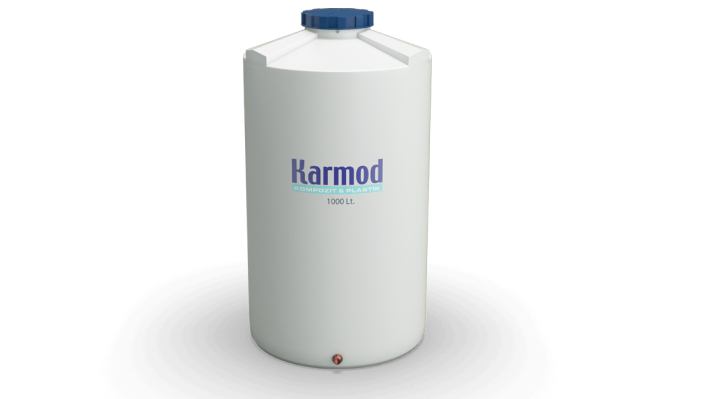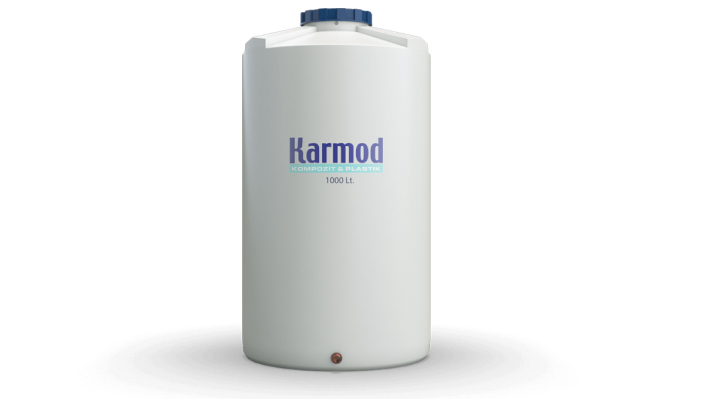In recent days, we observe the usage of these tanks almost everywhere around us. Water tank options, when considered for individual use, are utilized in homes for rainwater harvesting systems, and in some rural areas where water is scarce, they are widely employed. From a corporate perspective, they are sometimes used for storing and transporting raw materials, and at other times, for storing diesel and other combustible substances.
If we look at their general purposes of use, we can see that water tanks are vehicles designed to store one or more liquids, foods, or chemical substances, and keep them preserved until they are needed, and then be discharged for use. For some users, the positioning of these tanks can be crucial. Especially brands planning to use them for food storage may have concerns about food safety. However, these tanks are manufactured to withstand such situations with strength. Furthermore, as they are covered by our company's two-year warranty against manufacturing defects, you don't need to worry about such issues. The positioning and transportation methods can vary depending on the designs. Let's explore together where you can position these tanks based on their designs.
Where Can Water Tanks Be Positioned According to Their Designs?
Regarding their designs, water tanks nowadays can be placed at higher locations for better protection and longer lifespan. This is merely a myth. If you have significant concerns, you can also opt for tank models with legs. Thanks to the legs, the tank's contact with the ground is minimized. Additionally, modern tanks are manufactured using three different materials: polyethylene, polyester, and stainless steel. Some designs can be found exclusively in polyethylene, while others can be produced with all the materials.
- Vertical design tanks are highly suitable for stacking side by side due to their design. Tanks with this design are available in all three materials. They are often preferred because they fit well with production lines. Their popularity can be easily inferred from their appearance.
- Horizontal design tanks, like vertical tanks, are also widely preferred. Tanks with this design can be manufactured using all materials, namely polyethylene, polyester, and stainless steel. Due to their convenience in transportation, they are extensively used in the transportation sector.
- Rectangular or prismatic design tanks, while referred to as rectangular in polyethylene models, are called prismatic in stainless steel and polyester water tank options. The largest capacity tanks are produced with this design. In fact, custom-designed tanks are generally manufactured using this design. Water tanks with a capacity of up to 100 tons can be produced using this design.

- Silo design tanks can also include other legged tanks in this category. Vertical design tanks are produced with legs. Additionally, tanks made of stainless steel have legs added to all designs. In silo design tanks produced with polyethylene, we observe that some are open at the top, without a cover. This design is intended for grain storage. For users who prefer it, polyethylene silo design tanks with lids are also available.
- Other design tanks are custom-made for specific uses. As an example, we can mention pickling tanks. These tanks are designed for pickling purposes and are produced accordingly. It is recommended to use them for this specific purpose.
What Are the General Features of Water Tanks?
With our experience dating back to 1986 and the use of cutting-edge production systems, we manufacture highly durable and long-lasting tanks. After providing information about how these tanks can be positioned according to their designs, it is essential to briefly mention their general features, as they are often inquired about. These tanks offer users numerous advantages.
Here are the general features of these tanks:
- Polyethylene tanks are produced as monoblock structures, while other tanks are manufactured by joining various parts together.
- All tanks have high resistance to ultraviolet rays.
- They are all designed to withstand impacts.
- Easy to transport.
- They are certified to comply with international food regulations and the Ministry of Health regulations.
- From cleaning to maintenance, everything can be done very easily.
- The working temperature range is between -5 degrees to +80 degrees Celsius.
- The size variety ranges from 50 liters to as large as 100,000 liters.
- Custom-designed tanks are available.
- They can be produced in any desired color.
- Our production facilities do not use recycled plastics or any harmful materials that could affect the production process or coloration.
In this article, we have addressed the myths about tank positioning and the features of the tanks. If you have any questions about tanks or other products, you can contact our customer representatives to get more information.


 EN
EN
 DE
DE
 FR
FR
 IT
IT
 ES
ES
 PT
PT
 RU
RU
 AR
AR
 BG
BG
 SR
SR
 GR
GR
 SQ
SQ
 RO
RO
 PL
PL
 HU
HU
 CZ
CZ
 HR
HR
 AZ
AZ
 GE
GE
 AM
AM
 IL
IL